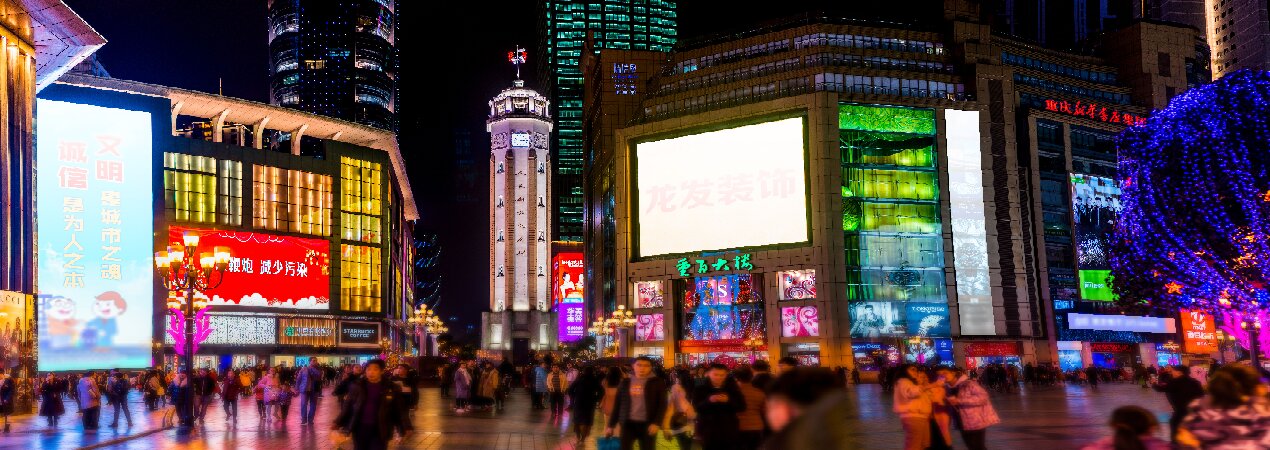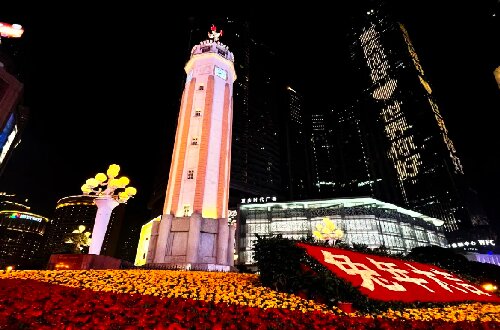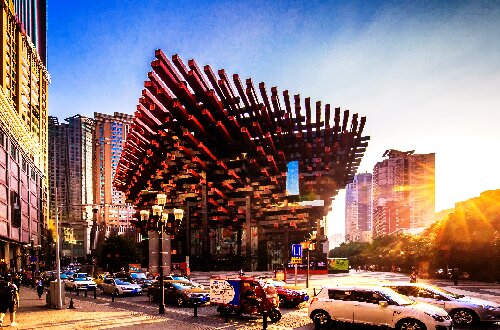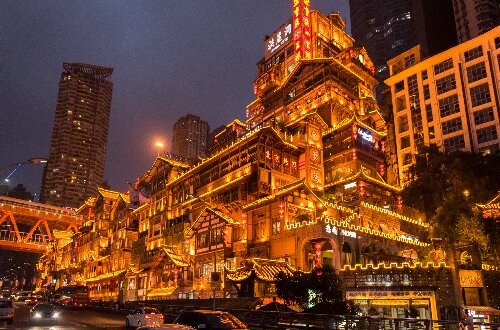Jiefangbei Pedestrian Street

As the oldest and most core commercial landmark and urban window in Chongqing, Jiefangbei Pedestrian Street has always been a vane for the commercial development of Chongqing and a window for the world to view Chongqing. In promoting the construction of the Chengdu-Chongqing Economic Circle, cultivating and building an international consumption center city, and transforming and upgrading urban commercial areas, it plays a leading and exemplary role.
- Chinese name: 解放碑步行街 jiě fàng bēi bù xíng jiē
- Suggested time: 1 - 3 hours
- Ticket: Free
- Open hours: Open all day
- The best time to visit: all year around
- Address: Located in Yuzhong District, Chongqing (centered around the People's Liberation Monument, with specific addresses varying for different parts of the pedestrian street).
- How to get there: Take Line 1 and get off at Jiaochangkou Station, Exit 9, then walk about 160 meters. Or take Line 2 and get off at Linjiangmen Station, and walk about 420 meters.
Highlights of Jiefangbei Pedestrian Street
Monument to the people's Liberation
 Monument to the people's Liberation
Monument to the people's LiberationThe Monument to the Victory of the War of Resistance against Japanese Aggression and the People's Liberation Monument, abbreviated as the "Liberation Monument", is located in the central area of the Liberation Monument Commercial Pedestrian Street in Yuzhong District, Chongqing City, People's Republic of China. It broke ground on October 31, 1946, and was completed in August 1947. It is a spiritual symbol of the victory of the War of Resistance against Japanese Aggression and the only monument in China commemorating the victory of the Chinese nation's War of Resistance against Japanese Aggression.
The Liberation Monument records the history and culture of Chongqing and supports both its past and future. Today, the Liberation Monument has become a byword for the Central Business District. It is a core urban business card of Chongqing and one of the top ten cultural symbols of Chongqing.
Bayi Road Food Street
Bayi Road Food Street near Jiefangbei is a food paradise in Chongqing. Hot pot, Chongqing noodles, hot and sour noodles, every bite is filled with the flavor of Chongqing. The snack stalls here are very lively and it is a good place to feel the hustle and bustle of Chongqing.
The Huguang Guild Hall
The Huguang Guild Hall was built in the 24th year of the Qianlong reign of the Qing Dynasty (1759) and expanded in the 26th year of the Daoguang reign (1846). The reliefs and openwork carvings of the guild hall buildings are extremely exquisite and lifelike. The themes mainly include patterns of character stories such as Journey to the West, The Story of the Western Wing, The Investiture of the Gods, and The Twenty-four Filial Exemplars, as well as patterns of dragons and phoenixes, animals, and various rare flowers and plants. The entire complex of ancient buildings features carved railings and painted beams, with exquisite carvings.
It represents the architectural art of the southern regions during the Ming and Qing dynasties in China and is also the largest existing ancient guild hall building complex in China.
The Cathay Art Center
 The Cathay Art Center
The Cathay Art CenterThe Cathay Art Center actually consists of two parts: the Cathay Grand Theater and the Chongqing Art Museum. Since the entrance to the Chongqing Art Museum is at the back, most visitors are attracted by the unique "chopstick"-shaped front and often overlook the quiet art museum behind.
The Chongqing Art Museum was established in 2013, covering an area of nearly 10,000 square meters. It is the third art museum built in Chongqing. It mainly exhibits traditional Chinese paintings, oil paintings, prints and sculptures.
Hongya Cave Folk Customs Scenic Area
 Hongya Cave Folk Customs Scenic Area
Hongya Cave Folk Customs Scenic AreaThe history of Hongya Cave can be traced back to the Ming Dynasty. It used to be a traditional residential house in Chongqing and has witnessed the historical changes and social progress of Chongqing. Nowadays, Hongya Cave has become one of the most well-known online celebrity scenic spots in Chongqing. There are various special snacks, handicrafts, folk performances, etc. It is a must-visit place for tourists from other places when they come to Chongqing.
The Shibati Traditional Scenic Area
The Shibati Traditional Scenic Area is an urban scenic spot transformed from old communities. It has preserved the historical features of the old city of Chongqing and is a true portrayal of the life of the local citizens in old Chongqing. The stone steps serve as a passage connecting the bustling commercial area on the hillside and the old urban area at the foot of the hill, which is full of the lively and down-to-earth atmosphere of the mountain city.
The Yangtze River Cableway
The Yangtze River Cableway is known as "the first aerial corridor over the Yangtze River which stretches thousands of miles". Taking the cableway to cross the two banks of the Yangtze River, one can not only enjoy the excitement brought by the speed but also overlook the magnificent sight of the surging river water from a high place. Especially in the early morning or at dusk, when the sunlight shines on the river surface, the scenery is breathtakingly beautiful.
Drop us a line and we'll connect you with the top China expert in no time!